Abstract
1. The effect of semistarvation and complete starvation (sufficient to produce a loss of about 32 and 25% respectively of initial body weight) on the active transport of L-glucose has been studied by the use of sacs of everted mid-small intestine of rats. The animals were allowed free access to water.
2. Sacs from animals on a restricted diet transported L-glucose against its concentration gradient, but sacs from fully fed rats did not. Even when sacs from fully fed rats were distended sufficiently to cause them to lose serosal volume, the L-glucose concentration in the final serosal fluid was never greater than that in the final mucosal fluid.
3. The L-glucose active transport was independent of net water movement, needed oxygen, was not demonstrable at 27° C, and required Na ions at a concentration of 83 mM or greater. It could be completely inhibited by 10-6 M phlorrhizin, or 10 mM L-histidine, or 1·39 mM D-glucose. Phlorrhizin at a concentration of 10-8 M reduced, but did not prevent, L-glucose active transport.
4. It seems probable that L-glucose active transport is mediated by the mechanism that actively transports D-glucose.
5. Un-incubated mid-small intestine of fully fed rats contained 37·8 mg D-glucose/100 g wet wt. of tissue, whereas semistarved intestine had only 10·8 mg D-glucose/100 g. The lack of demonstrable active transport of L-glucose by normal intestine may possibly have been caused, at least in part, by inhibition of the process by endogenous D-glucose.
6. There appeared to be no metabolism of L-glucose by rat intestine, nor conversion to the D-form.
7. The hypothesis that sugars require the D-pyranose ring structure for active absorption is no longer tenable.
Full text
PDF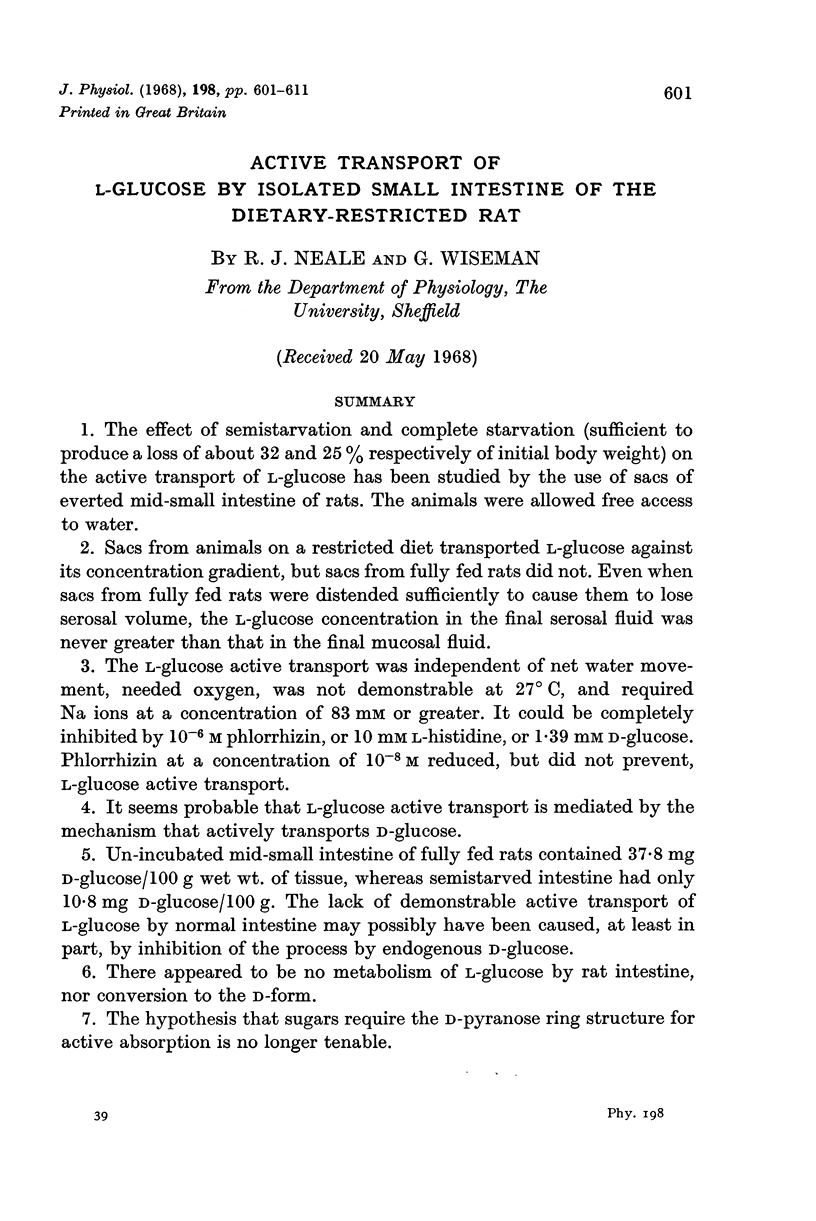
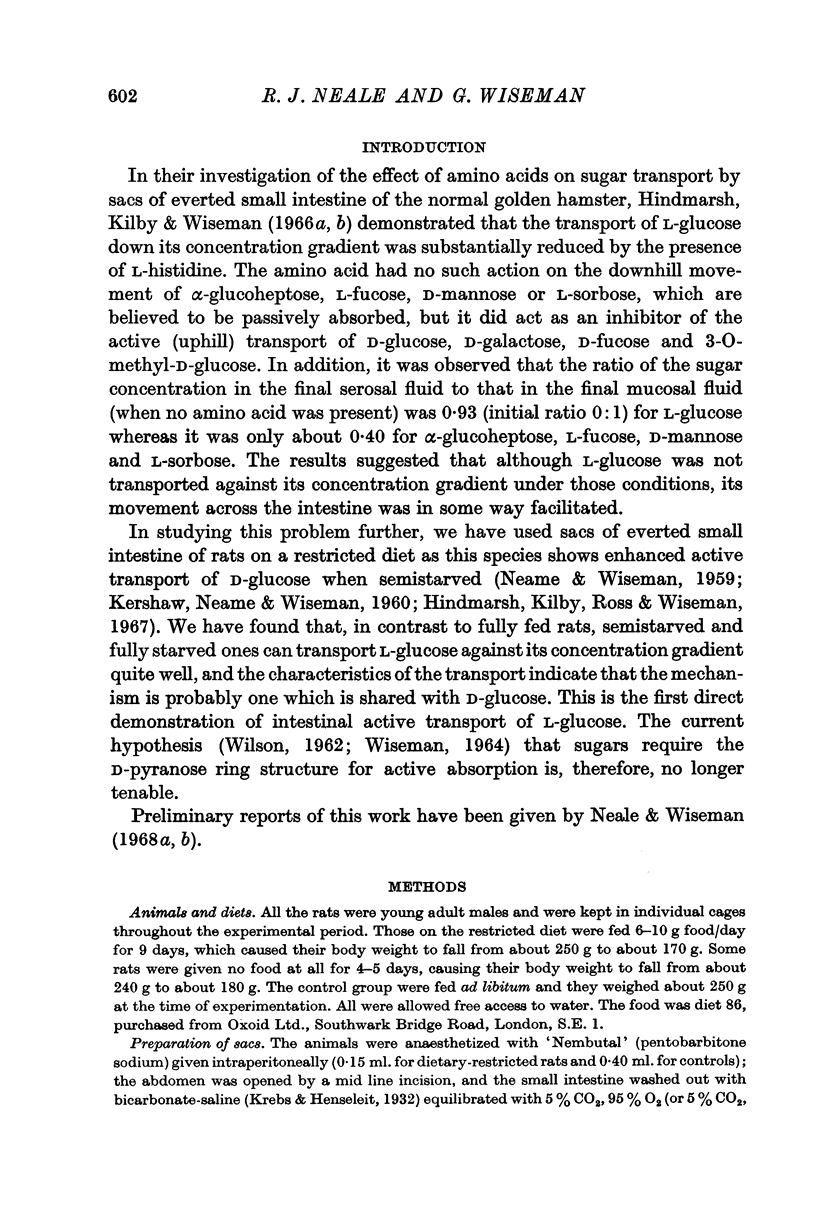
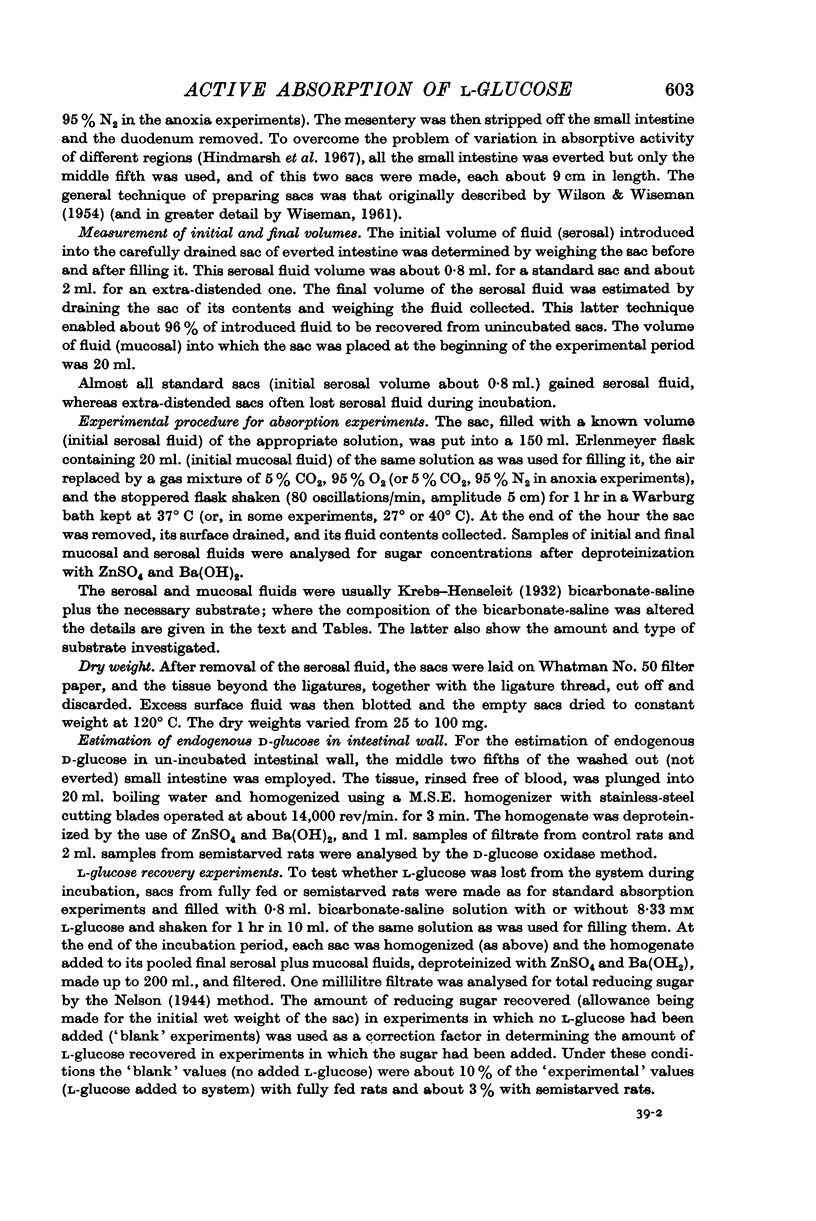
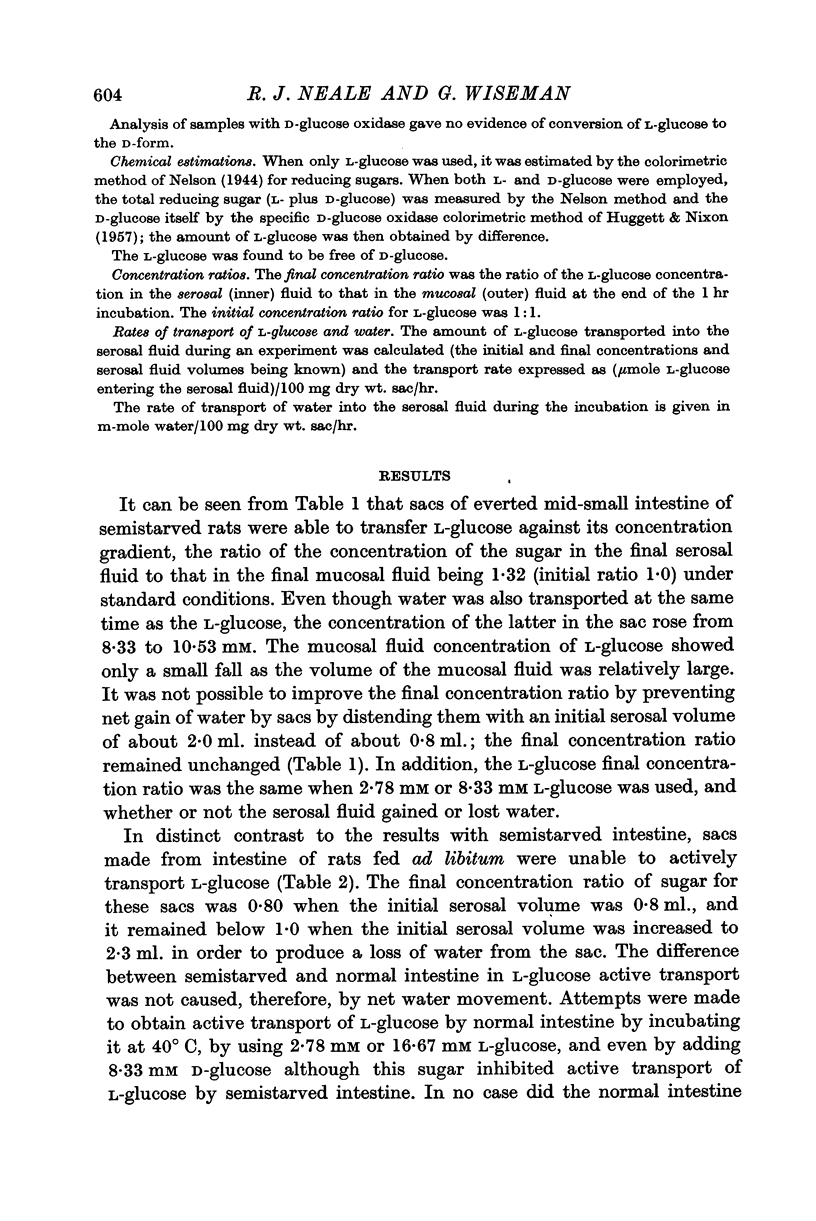
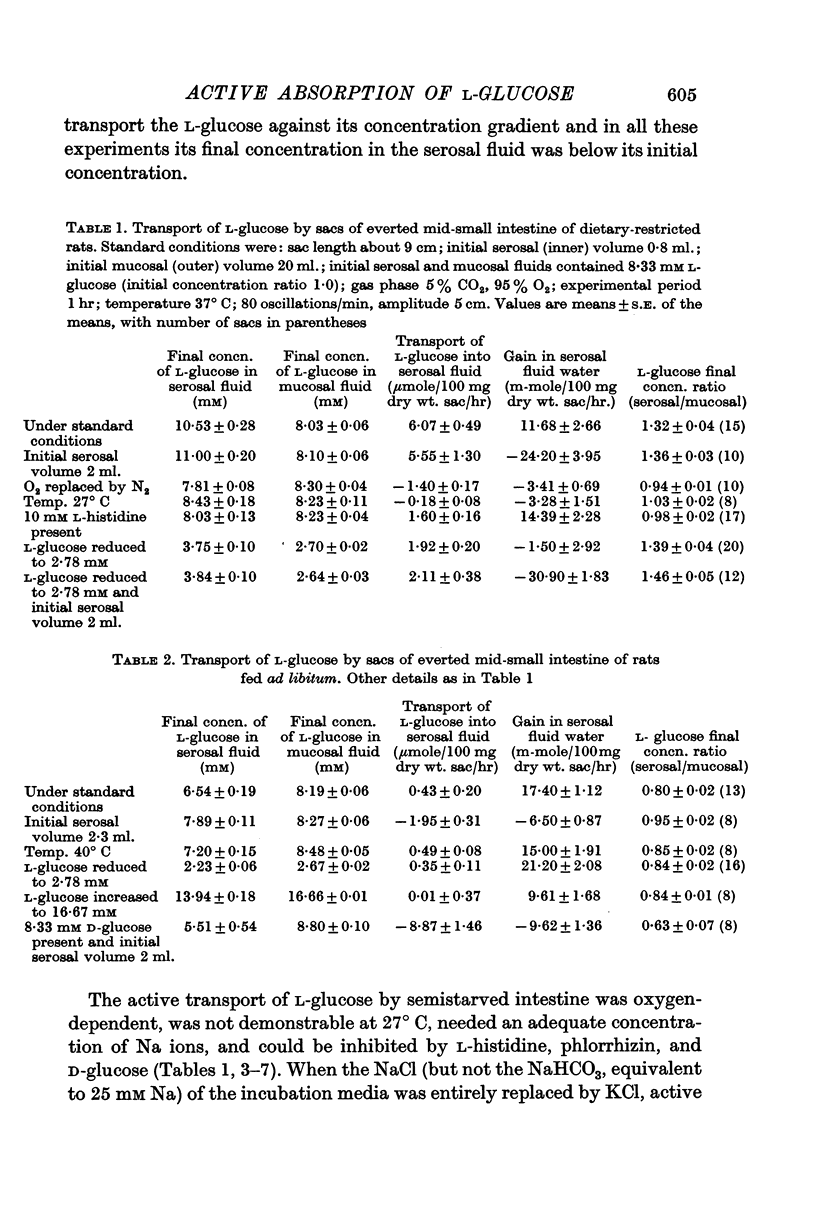
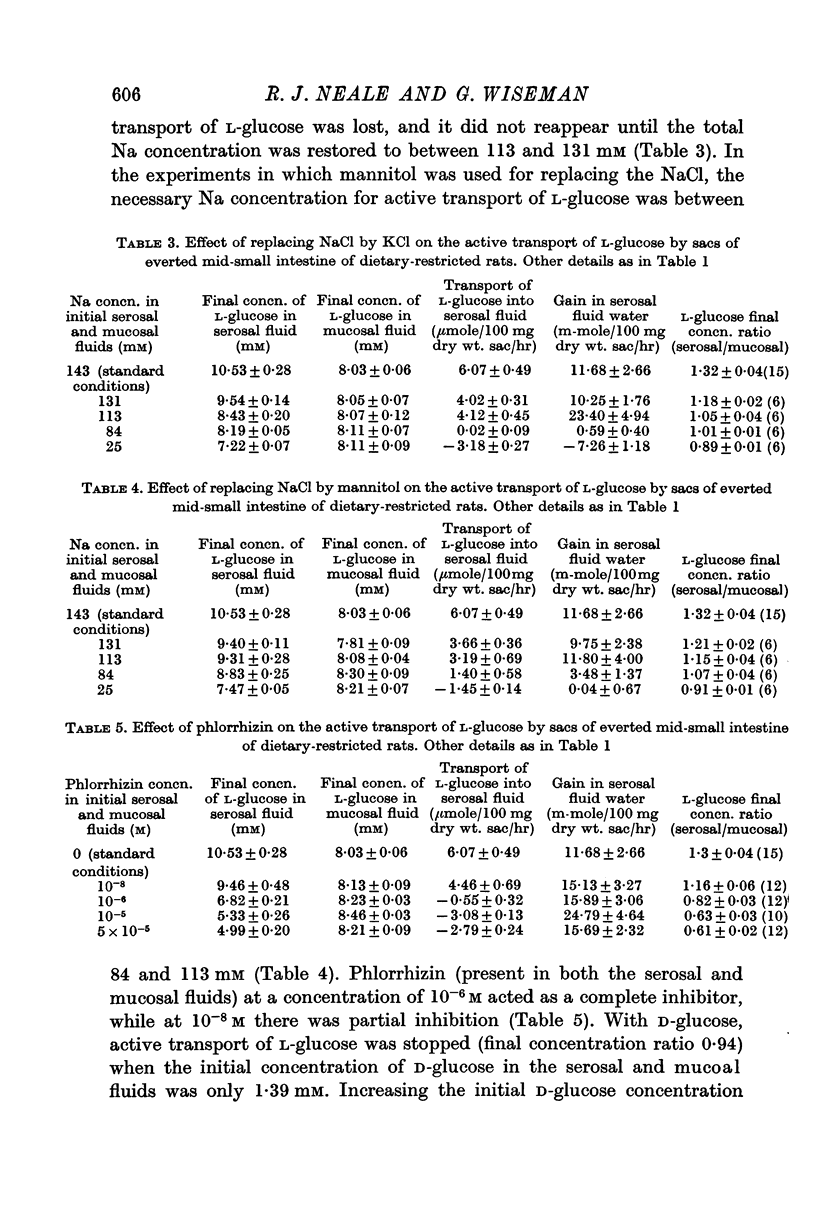

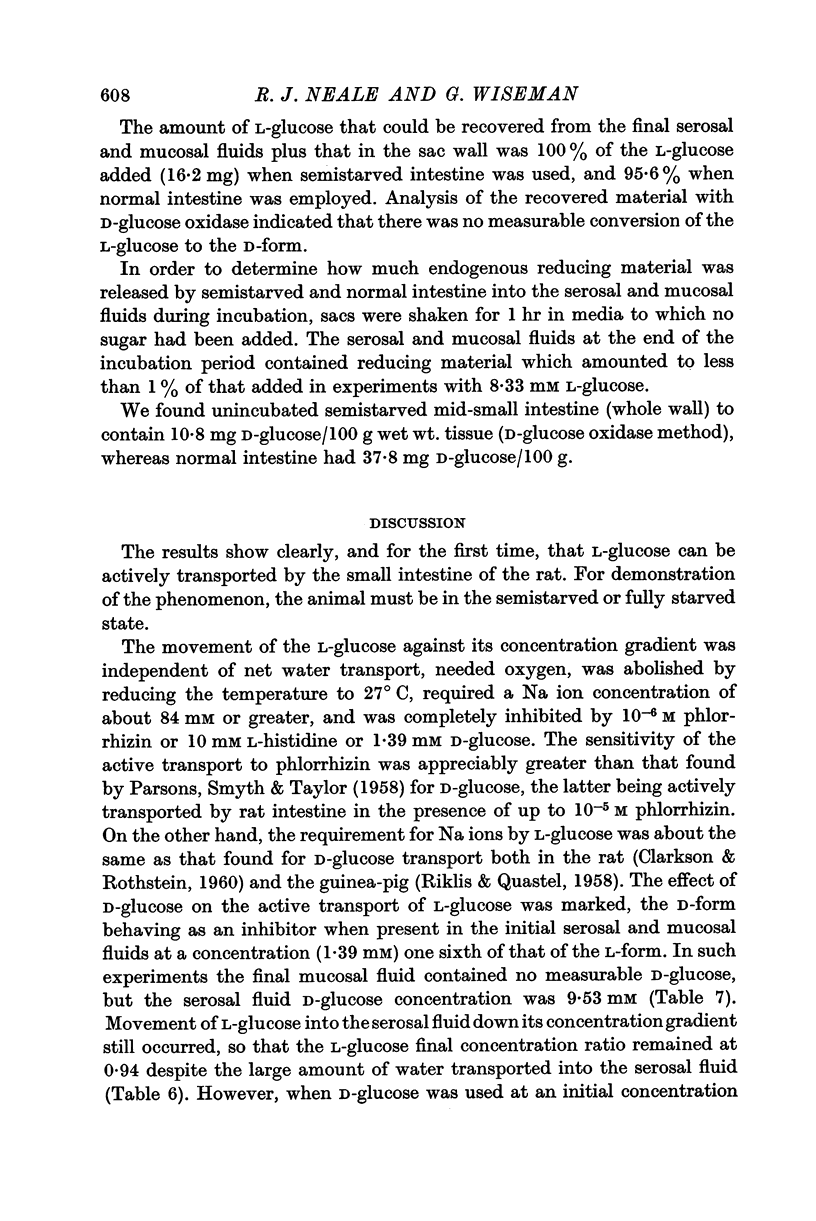
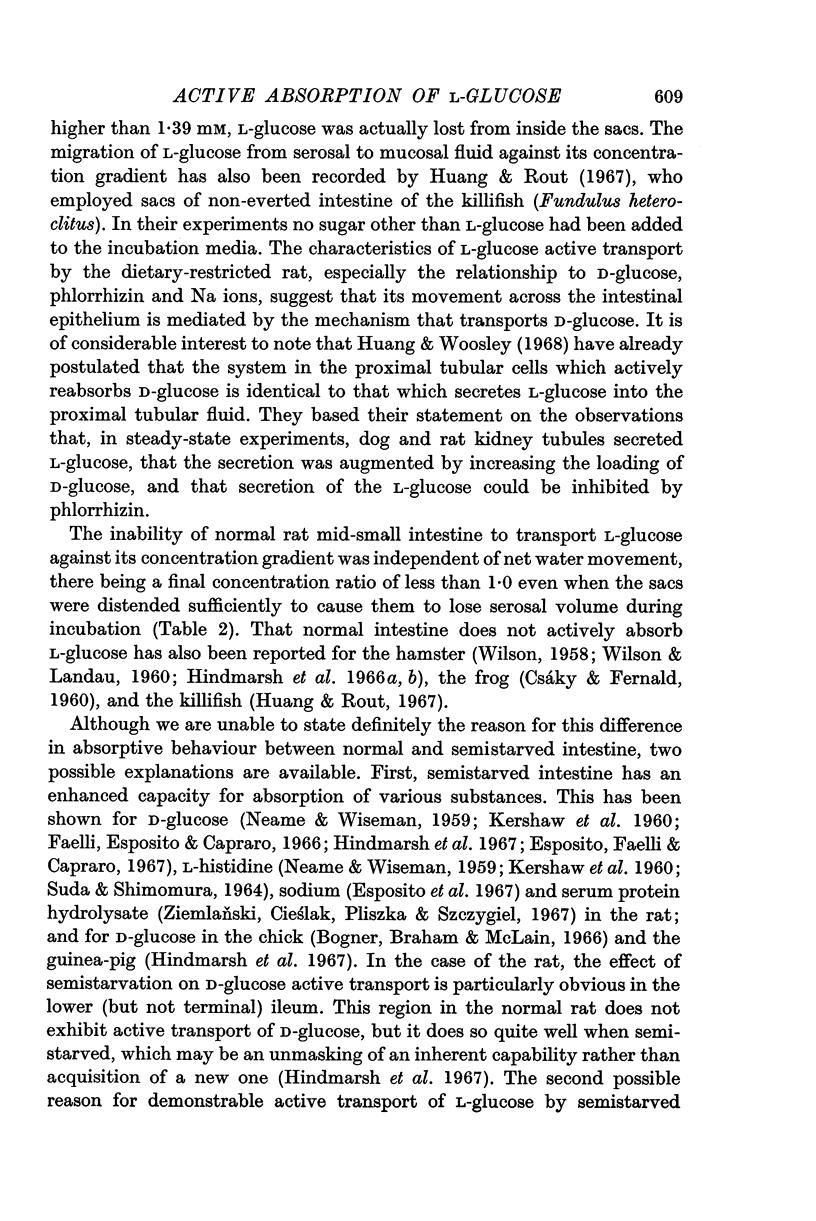
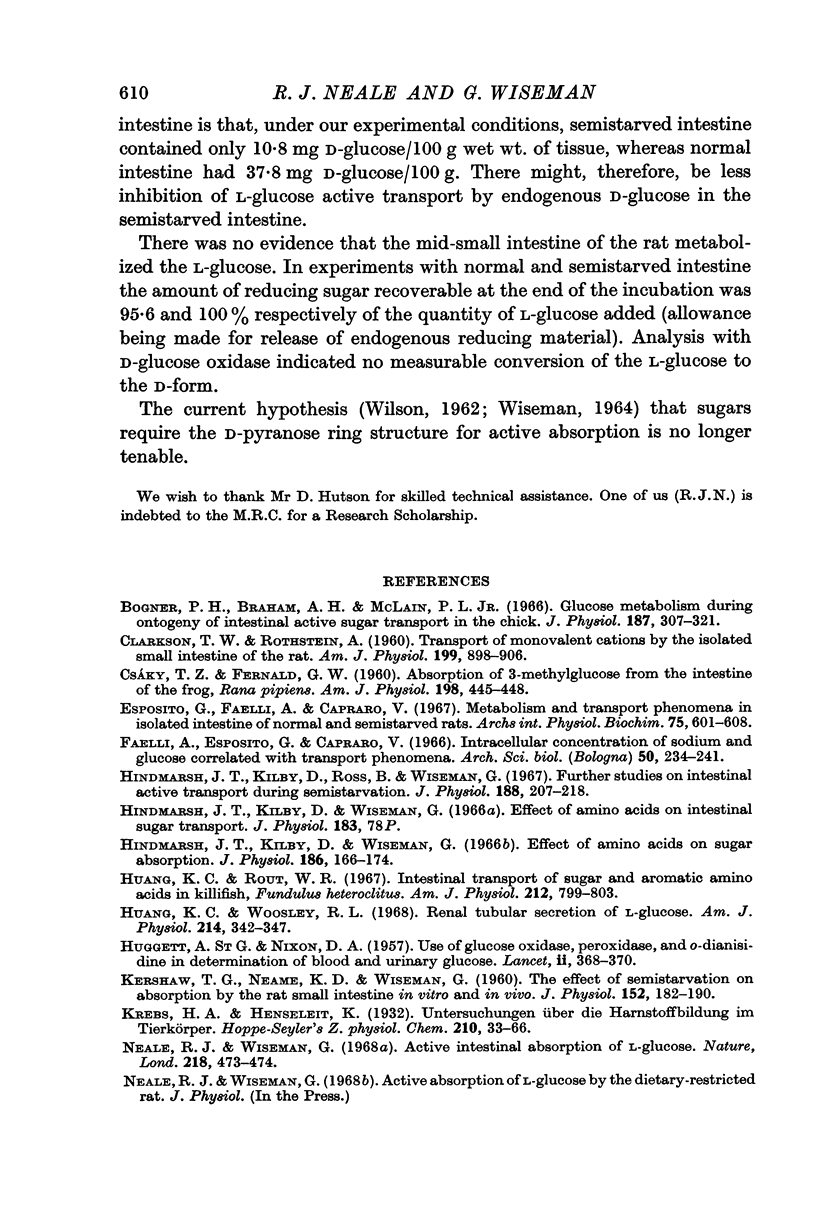

Selected References
These references are in PubMed. This may not be the complete list of references from this article.
- BLACK J. W., FISHER E. W., SMITH A. N. The effect of precursors of 5-hydroxytryptamine on gastric secretion in anaesthetized dogs. J Physiol. 1959 Apr 23;146(1):10–17. doi: 10.1113/jphysiol.1959.sp006174. [DOI] [PMC free article] [PubMed] [Google Scholar]
- Bogner P. H., Braham A. H., McLain P. L., Jr Glucose metabolism during ontogeny of intestinal active sugar transport in the chick. J Physiol. 1966 Nov;187(2):307–321. doi: 10.1113/jphysiol.1966.sp008091. [DOI] [PMC free article] [PubMed] [Google Scholar]
- CLARKSON T. W., ROTHSTEIN A. Transport of monovalent cations by the isolated small intestine of the rat. Am J Physiol. 1960 Nov;199:898–906. doi: 10.1152/ajplegacy.1960.199.5.898. [DOI] [PubMed] [Google Scholar]
- CSAKY T. Z., FERNALD G. W. Absorption of 3-methylglucose from the intestine of the frog, Rana pipiens. Am J Physiol. 1960 Feb;198:445–448. doi: 10.1152/ajplegacy.1960.198.2.445. [DOI] [PubMed] [Google Scholar]
- Esposito G., Faelli A., Capraro V. Metabolism and transport phenomena in isolated intestine of normal and semistarved rats. Arch Int Physiol Biochim. 1967 Sep;75(4):601–608. doi: 10.3109/13813456709112508. [DOI] [PubMed] [Google Scholar]
- Faelli A., Esposito G., Capraro V. Intracellular concentration of sodium and glucose correlated with transport phenomena. Arch Sci Biol (Bologna) 1966 Jul-Sep;50(3):234–241. [PubMed] [Google Scholar]
- HUGGETT A. S., NIXON D. A. Use of glucose oxidase, peroxidase, and O-dianisidine in determination of blood and urinary glucose. Lancet. 1957 Aug 24;273(6991):368–370. doi: 10.1016/s0140-6736(57)92595-3. [DOI] [PubMed] [Google Scholar]
- Hindmarsh J. T., Kilby D., Ross B., Wiseman G. Further studies on intestinal active transport during semistarvation. J Physiol. 1967 Jan;188(2):207–218. doi: 10.1113/jphysiol.1967.sp008134. [DOI] [PMC free article] [PubMed] [Google Scholar]
- Hindmarsh J. T., Kilby D., Wiseman G. Effect of amino acids on sugar absorption. J Physiol. 1966 Sep;186(1):166–174. doi: 10.1113/jphysiol.1966.sp008026. [DOI] [PMC free article] [PubMed] [Google Scholar]
- Huang K. C., Rout W. R. Intestinal transport of sugar and aromatic amino acids in killifish, Fundulus heteroclitus. Am J Physiol. 1967 Apr;212(4):799–803. doi: 10.1152/ajplegacy.1967.212.4.799. [DOI] [PubMed] [Google Scholar]
- Huang K. C., Woosley R. L. Renal tubular secretion of L-glucose. Am J Physiol. 1968 Feb;214(2):342–347. doi: 10.1152/ajplegacy.1968.214.2.342. [DOI] [PubMed] [Google Scholar]
- KERSHAW T. G., NEAME K. D., WISEMAN G. The effect of semistarvation on absorption by the rat small intestine in vitro and in vivo. J Physiol. 1960 Jun;152:182–190. doi: 10.1113/jphysiol.1960.sp006480. [DOI] [PMC free article] [PubMed] [Google Scholar]
- Neale R. J., Wiseman G. Active intestinal absorption of L-glucose. Nature. 1968 May 4;218(5140):473–474. doi: 10.1038/218473a0. [DOI] [PubMed] [Google Scholar]
- PARSONS B. J., SMYTH D. H., TAYLOR C. B. The action of phlorrhizin on the intestinal transfer of glucose and water in vitro. J Physiol. 1958 Dec 30;144(3):387–402. doi: 10.1113/jphysiol.1958.sp006109. [DOI] [PMC free article] [PubMed] [Google Scholar]
- RIKLIS E., QUASTEL J. H. Effects of cations on sugar absorption by isolated surviving guinea pig intestine. Can J Biochem Physiol. 1958 Mar;36(3):347–362. [PubMed] [Google Scholar]
- WILSON T. H., LANDAU B. R. Specificity of sugar transport by the intestine of the hamster. Am J Physiol. 1960 Jan;198:99–102. doi: 10.1152/ajplegacy.1960.198.1.99. [DOI] [PubMed] [Google Scholar]
- WILSON T. H., WISEMAN G. The use of sacs of everted small intestine for the study of the transference of substances from the mucosal to the serosal surface. J Physiol. 1954 Jan;123(1):116–125. doi: 10.1113/jphysiol.1954.sp005036. [DOI] [PMC free article] [PubMed] [Google Scholar]
- WISEMAN G. Sac of everted intestine technic for study of intestinal absorption in vitro. Methods Med Res. 1961;9:287–292. [PubMed] [Google Scholar]


